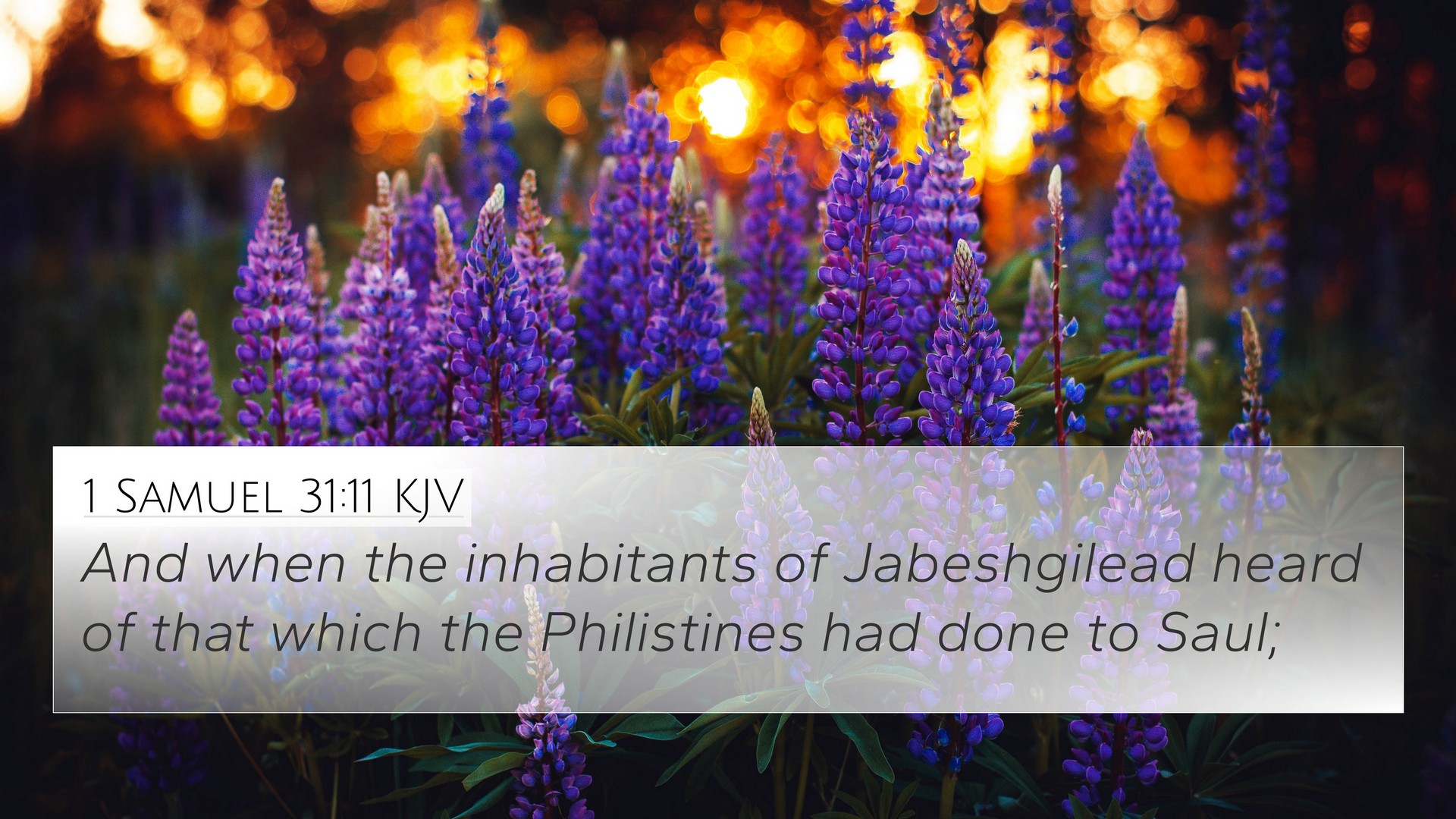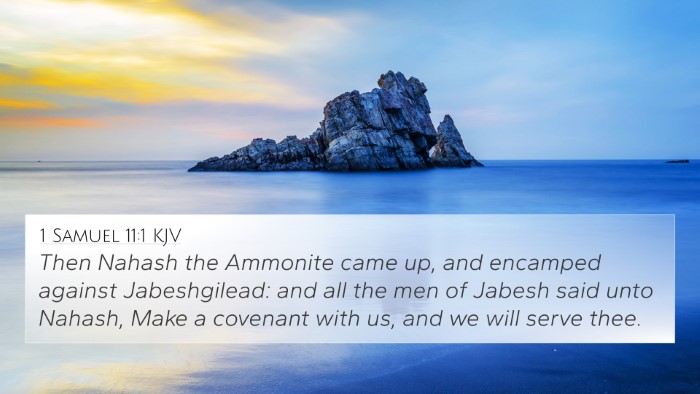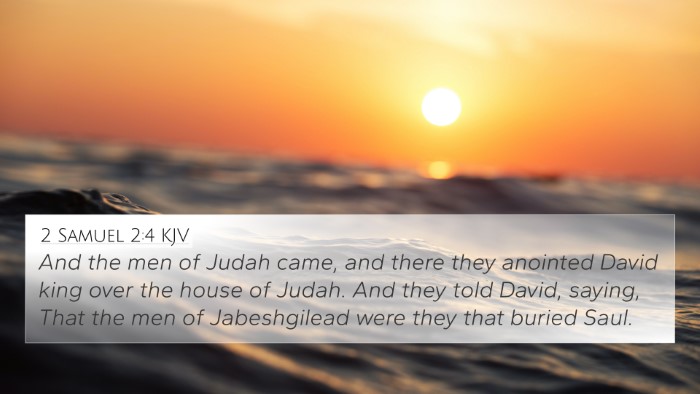Understanding 1 Samuel 31:11
Verse: "But when the inhabitants of Jabesh-gilead heard what the Philistines had done to Saul," (1 Samuel 31:11, ESV)
This verse captures the immediate reaction of the people of Jabesh-gilead following Saul's tragic end, highlighting themes of loyalty, honor, and remembrance in the face of loss. Let's delve into its meaning by examining insights from various public domain commentaries.
Context and Significance
The story of King Saul's death is significant as it marks the end of his reign and the dramatic transition to King David’s leadership. This particular verse emphasizes the loyalty of the inhabitants of Jabesh-gilead, who were deeply affected by Saul's demise due to his past act of saving them from the Ammonites (1 Samuel 11:1-11). Their reaction serves to illustrate the bond between the king and his people.
Commentary Insights
-
Matthew Henry:
Henry highlights the honor and respect shown by Jabesh-gilead towards Saul, underscoring the importance of remembering those who have aided us in times of trouble. Their actions reflect a deep loyalty that warrants attention.
-
Albert Barnes:
Barnes notes that the news of Saul's death would have spread quickly, causing mourning not just for the loss of a king, but for a person who had made sacrifices on behalf of his people. This emphasizes the personal connection between rulers and their subjects.
-
Adam Clarke:
Clarke points out the historical significance of the people’s response, indicating that their actions were driven by a sense of duty and gratitude. This tragedy invokes a collective memory that binds the people’s loyalty to their leader, even after his death.
Thematic Connections
This verse opens up various themes within the biblical narrative. Below are some relevant thematic connections and Bible verse cross-references:
- Loyalty and Honor: Ruth 1:16-17 - Ruth’s loyalty embodies similar themes of commitment and remembrance.
- The Importance of Memory: Deuteronomy 6:12 - A reminder to not forget the past and the help received from God and leaders.
- Grieving Leaders: 2 Samuel 1:11-12 - David’s lament for Saul parallels the lamentation of the people of Jabesh-gilead.
- Kingly Sacrifice: John 10:11 - Jesus, as the Good Shepherd, illustrates sacrificial leadership, akin to Saul’s past actions.
- Heroic Actions: 1 Samuel 11:9-11 - Recalling how Saul saved Jabesh-gilead from the Ammonites emphasizes the bond between the city and Saul.
- Mourning for Leaders: Acts 5:1-11 - The collective mourning for Ananias and Sapphira shows a community's reaction to the loss of its members.
- Transition of Leadership: 1 Chronicles 10:13-14 - Discussing the consequences of Saul's disobedience and the divine selection of David reveals the shifts in leadership themes.
Scriptural Cross-Referencing
For those interested in deeper study and understanding of connections between scripture, cross-referencing Bible texts provides rich insight into the multifaceted nature of biblical themes. Here are tools and methods for effective Bible cross-referencing:
- Bible concordance helps find keywords related to loyalty, leadership, and grieving.
- A Bible cross-reference guide can aid in discovering parallels and ironies in different scripture sections.
- Engage in cross-reference Bible study by identifying themes across Old and New Testaments.
- Use a comprehensive Bible cross-reference system to link themes from the Prophets with Apostolic teachings.
Conclusion
1 Samuel 31:11 exemplifies how loss resonates within communities and the enduring bonds formed by past actions of leaders. This verse invites profound reflection on the significance of loyalty, these themes reverberate through the entirety of scripture.




